Marbled Black Sesame Shokupan (Yudane) Bread, made with an overnight yudane, utilizes a unique marbling technique and includes up to 60% whole wheat flour.

Black Sesame Shokupan (Yudane) is the bake of the month for the Bread Baking Babes. February 16th marks our Sweet 16 Anniversary, and Kelly, of A Messy Kitchen, picked this lovely and soft multigrain loaf to celebrate.
This Marbled Black Sesame Shokupan (Yudane) Bread incorporates the yudane method to create a soft, nutty and flavorful bread. To create the contrasting marbled effect, black sesame seed paste is added to a portion of the dough. For good measure, I played around with adding varying amounts of freshly milled whole wheat flour in the yudane and final dough.
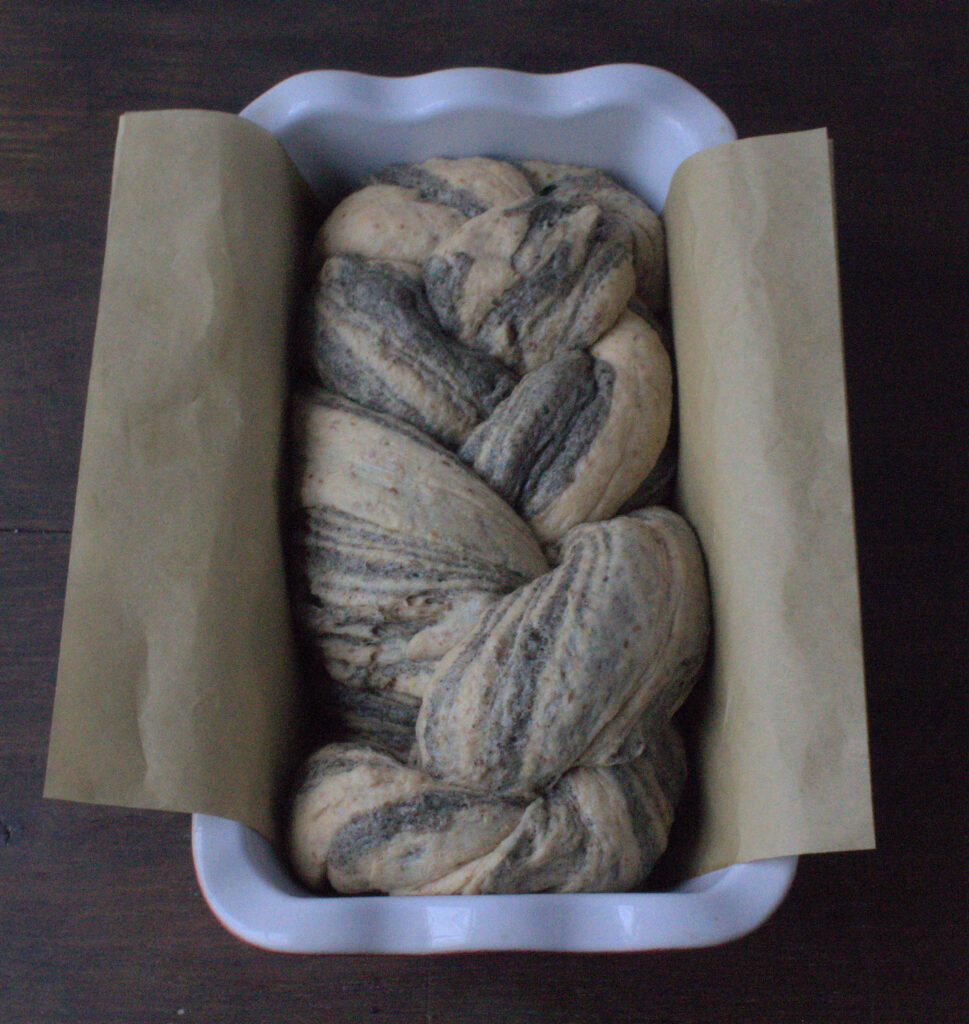
In this post on Marbled Black Sesame Shokupan (Yudane) Bread, you’ll learn how to make the sesame seed paste, and utilize an overnight yudane to create a beautiful marbled bread.
In the follow up post Sourdough Whole Wheat Black Sesame Seed Yudane Bread, you’ll learn how I converted the bread to sourdough, utilized the yudane method, and incorporated 100% freshly milled whole wheat flour into the dough.
I had never used the yudane method and was curious how it compared with the tanghzhong method, which I really like. Now that I’ve tried this method, I’m sold. I can envision using a yudane to add softness to all sorts of whole wheat breads.
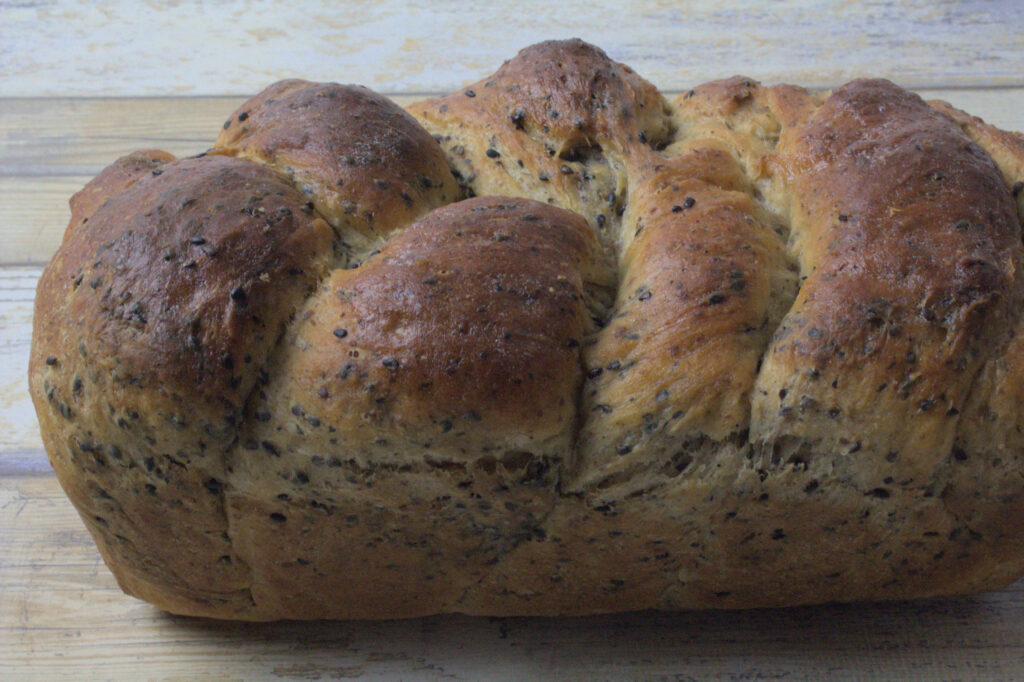
Comparison of the Yudane vs Tangzhong Techniques
The yudane and tangzhong methods are both used in bread-making to enhance the texture and shelf life, but they have some differences in their preparation and the effects they have on the finished bread.
Yudane
- Yudane involves mixing boiling water with flour and then allowing the mixture to rest, typically overnight. The ratio of water to flour is usually higher in yudane compared to tangzhong.
- Breads made with yudane tend to have a more tender crumb and a slightly chewier texture. They also often have a more pronounced depth of flavor, as the longer resting period allows for more complex flavor development.
- The high moisture content in yudane can result in bread that stays soft and fresh for a longer period.
- Yudane is particularly effective in breads with heavier grains and seeds, as it helps to soften these elements.
Tangzhong
- Tangzhong involves cooking a mixture of flour and water (or milk) until it reaches 65°C (149°F), creating a roux-like paste. This gelatinizes the starches in the flour, which can then absorb more water.
- Breads made using the tangzhong method are known for their exceptionally soft, fluffy texture, and are often lighter than those made with yudane. The flavor is typically mild and milky, especially if milk is used in the tangzhong.
- Like yudane, tangzhong helps bread retain moisture for a longer time, extending its freshness.
- This method is ideal for lighter, fluffier breads like milk bread or soft dinner rolls.
Both methods enhance moisture retention and extend shelf life; however, yudane is more suited for breads where a chewier texture and deeper flavor are desired, and tangzhong is better for softer, fluffier breads. The choice between the two often depends on the specific type of bread you’re making and the texture you’re aiming to achieve.
- Yudane
- Tangzhong
How to Make Black Sesame Seed Paste
The first time I made this bread, I mixed softened butter, sugar and toasted sesame seeds using the back of a fork to make the paste. This method wasn’t very effective. You really need to use a blender or food processor to get a smooth dark paste. The bread tasted wonderful! It just wasn’t marbled.
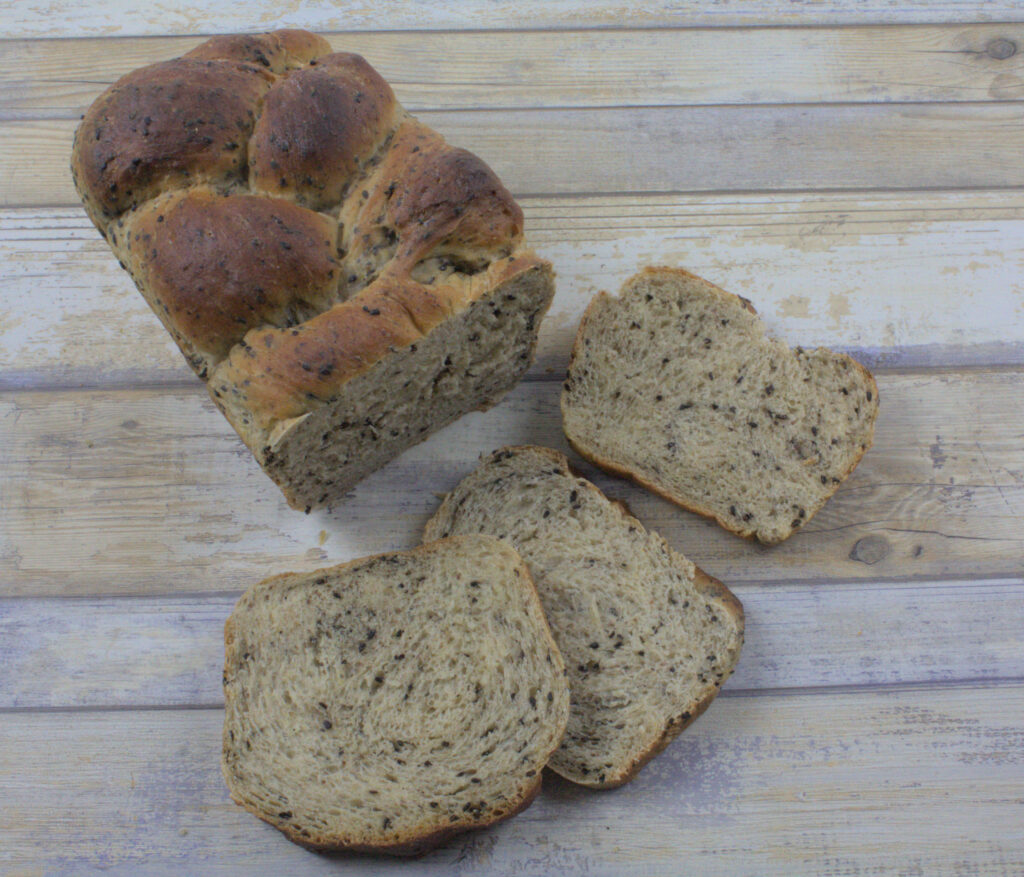
After researching different methods for making black sesame paste, I tried again and got much better results with the marbling. I did a better job braiding the first loaf, and the flavor was exceptional, but I love the marbling effect on the second loaf.

General guide to creating a smooth and flavorful black sesame seed paste
What You’ll Need
- Black sesame seeds
- Neutral oil: A light, neutral oil such as vegetable oil, grapeseed oil, or even a mild olive oil can be used to help achieve a smooth consistency. The amount of oil needed can vary depending on the desired thickness of the paste.
- Honey, optional*
*Adding too much honey will affect the overall flavor of the loaf so use it sparingly. For this bread, you want a nutty flavor.
Begin by toasting the black sesame seeds to enhance their nutty flavor. This can be done in a dry skillet over medium heat, stirring constantly to prevent burning. Once the seeds start to pop and release their aroma (usually in about 5 minutes), remove them from the heat.
Allow the toasted seeds to cool completely. This step is crucial as processing the seeds while they are still hot can affect the texture and flavor of the paste.
Transfer the cooled sesame seeds to a food processor or a high-powered blender. Grind the seeds at high speed until they form a coarse powder. Depending on the strength of your blender, this may take a few minutes.
With the processor or blender still running, start adding the oil in a slow, steady stream. The amount of oil needed can vary; start with a small amount and gradually add more until you reach the desired consistency. The paste should start to come together and become more spreadable.
To incorporate honey into the paste, start by adding a small amount after blending the toasted sesame seeds and oil. Begin with a teaspoon or two, blend thoroughly, and taste. Adjust the quantity of honey based on your preference for sweetness. Keep in mind that adding too much liquid can affect the paste’s consistency, so you might need to adjust the amount of oil or sesame seeds accordingly.
Continue to process the mixture until it is smooth. If the paste is too thick, you can add a bit more oil to thin it out. Conversely, if it’s too runny, add more toasted sesame seeds.
Taste the paste and adjust the seasoning if necessary. Some people like to add a pinch of salt to enhance the nutty flavor of the sesame seeds.
Transfer the black sesame paste to an airtight container. It can be stored in the refrigerator for several weeks.
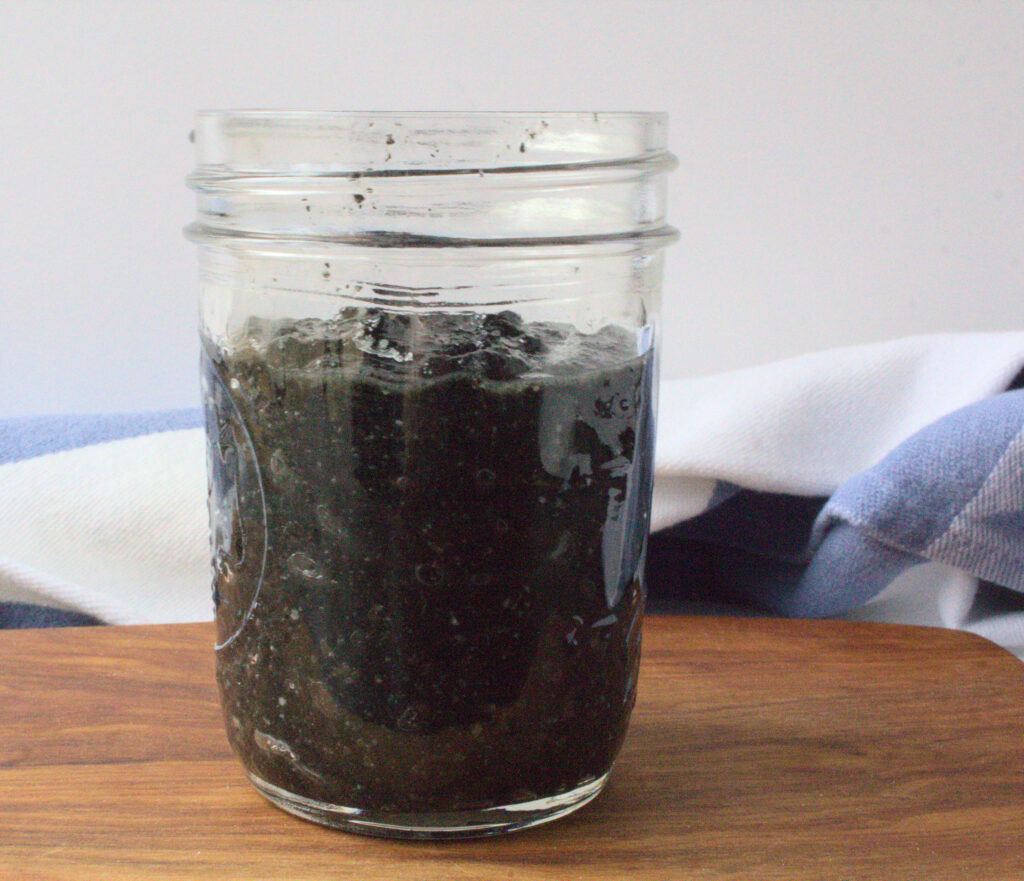
Additional resources for making black sesame seed paste
- https://whattocooktoday.com/black-sesame-paste-and-black-sesame-powder.html
- https://www.cooking-therapy.com/black-sesame-paste-recipe/
Photo Tutorial for Shaping the Marbled Loaf
You might enjoy one of these other breads made with black sesame seeds
Print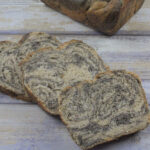
Marbled Black Sesame Shokupan (Yudane) Bread
- Yield: 1 Loaf 1x
Description
Marbled Black Sesame Shokupan (Yudane) Bread, made with an overnight Yudane, utilizes a unique marbling technique and includes up to 60% whole wheat flour.
Ingredients
Yudane:
- 75 grams white whole wheat flour (or Kamut)
- 70–75 grams boiling water
Bread dough:
- 160 grams all-purpose flour
- 100 grams white whole wheat flour
- 40 grams Kamut (or spelt)
- 200 grams whole or 2% milk (or non-dairy), cold (reserve 30g, about 2 tbsp, and add in 1 tbsp at a time to final dough if dry)
- 1 1/2 tsp instant yeast
- 42 grams (2 tbsp + 3/4 tsp) brown sugar
- 1 1/8 tsp sea salt
- 15 grams (2 Tbsp) ground flaxseed meal
- 15g butter
Black sesame paste:
- 2 Tbsp. Black sesame seeds
- Oil (light, neutral oil such as vegetable oil, grapeseed oil, or a mild olive oil)
- Honey, to taste
Topping:
- egg wash (1 small egg + 1/2 tbsp water, beaten together)
Instructions
The day before:
Make the Yudane:
- In a bowl, combine 75g bread flour in a bowl and boiling water and mix well with spatula or spoon.
- Cover tightly and place in the fridge for at least 4 hours or overnight. The mixture will be stiff after mixing, and soft and pliable the next morning. Use directly from the fridge.
Make the black sesame seed paste:
- Process the black sesame seeds, oil, and honey (if using) in a high speed blender until it reaches a smooth consistency.
- If the paste is too thick, add a bit more oil to thin it out. If it’s too runny, add more toasted sesame seeds. Note: Adding too much honey will affect the overall flavor of the loaf so use it sparingly. For this bread, you want a nutty flavor.
The next day:
- The next day, or at least four hours after making the yudane, tear the yudane dough into pieces and combine with the flours, yeast, brown sugar, salt, flax seed meal, and milk in the bowl of a stand mixer. Stir together with a spatula or paddle attachment for 2 minutes to incorporate. Change to the dough hook and knead for another 3 minutes or until the dough comes together.
- Add the butter and continue kneading for another 10 – 13 minutes or until the gluten is well developed and can be drawn out into a fairly transparent sheet (windowpane test). This dough should be slightly tacky but not sticky. Scrape down the dough from the hook periodically during the kneading process to ensure well distributed gluten development.
- Using a scale and a bench knife, separate the dough into 1/3 and 2/3 portions. Place the smaller 1/3 portion of dough back in the mixer, add the black sesame paste, and knead until combined. About 3-4 more minutes.
- Place the plain and sesame dough each in their own bowl. Cover and let rise in a warm place for 1-2 hours or more, until double in size.
- When the doughs have doubled, turn them out onto a lightly floured surface. Using a rolling pin, roll out the plain dough into an 8×12-in (20×30-cm) rectangle. Roll out the sesame dough into an 8×6-in (20×15-cm) rectangle. Place the sesame dough on top of one side of the plain dough and fold the plain dough over to enclose the sesame dough.
- Using a bench scraper, pizza cutter, or knife, cut the dough in half width-wise, then stack the two pieces on top of each other. Roll the dough back into an 8 x 12 in (20 x 30 cm) rectangle. Repeat this step twice more, having finally cut and stacked a total of three times.
- Now, using the bench scraper, pizza cutter, or knife, slice the dough lengthwise into 3 equal 12-inch strips. Roll and twist each strip into a tube/rope shape and braid the ropes together.
- Grease an 8×4-in loaf pan. Fold the ends of the braided dough under to fit in the bread pan. Proof in a warm place for 45 min to 1 hour or until doubled in size.
- While the loaf is rising, preheat oven to 350°F (175°C). When the loaf has doubled, brush with egg wash. Bake for 30 minutes until golden and baked through, (internal temperature should be at least 190ºF).
- Cool in the pan for about 5-10 minutes. Remove the loaf from the pan and finish cooling on a wire rack completely before slicing and serving.
- Category: Braided Bread
Who are the Bread Baking Babes?
We are a group of bread bakers who get together every other month and bake bread! We would love for you to try this lovely, marbled bread and share your experience making it. Kelly, of A Messy Kitchen, is the host kitchen this month. Refer to the instructions on her blog to participate.
New recipes will be posted every other month on the 16th. Look for the next bake in April 2024. Check out our Facebook group to see the participants’ baking results during that time. If you would like to post your results with a Buddy badge on a blog, let us know in the comments or on the Facebook page.
The Bread Baking Babes
A Messy Kitchen – Kelly (host kitchen)
Bread Experience – Cathy
Karen’s Kitchen Stories – Karen
Judy’s Gross Eats – Judy
blog from OUR kitchen– Elizabeth
My Diverse Kitchen – Aparna
Thyme for Cooking – Katie (roundup)

Happy Baking!
Cathy
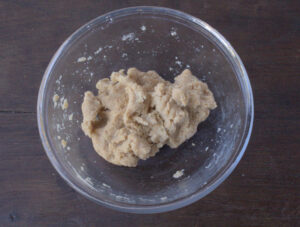
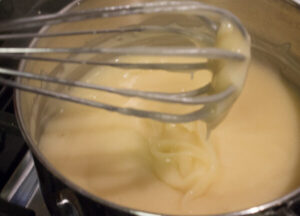

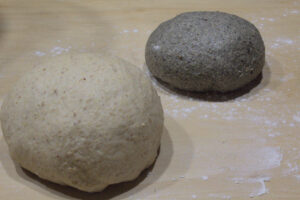
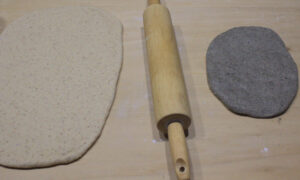
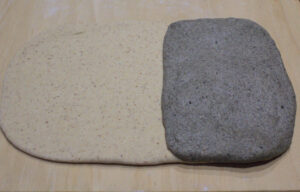

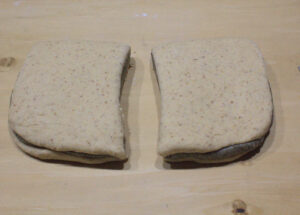
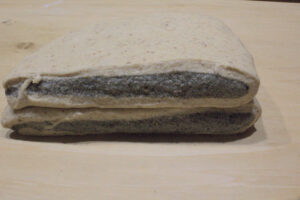
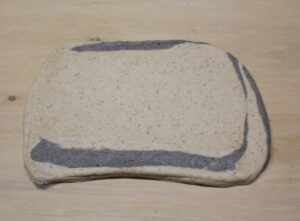
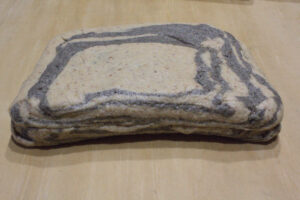
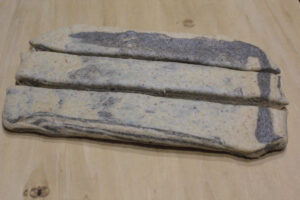
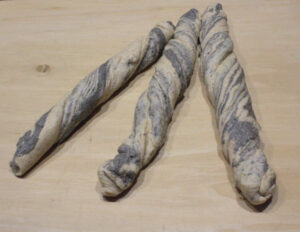
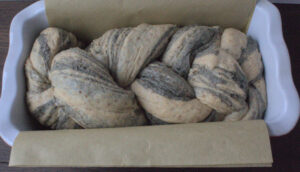
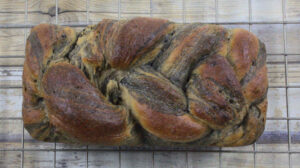
Kelly says
I love how both your loaves look, the whole wheat really provides some beautiful color and texture. Can’t wait to see how your yudane sourdough turned out!
Cathy says
Thanks Kelly! I loved both loaves! I forgot to mention I used 31% Kamut in the first loaf and 57% white whole wheat in the 2nd loaf.
Karen's Kitchen Stories says
Your marbling is beautiful. Great information on the differences between the two methods.
Cathy says
Thanks Karen! I plan to do more experimenting with both methods.
Judy says
All your experimenting is very helpful. Beautiful loaves!
Cathy says
Thank you Judy! I had fun experimenting.
Tanna says
Fantastic marbling Cathy, just truly a masterpiece loaf.
Cathy says
Hi Tanna! Thank you! It’s so good to hear from you.
Elizabeth says
This is so beautiful, Cathy. And thank you for your detailed explanation on how to make the sesame paste. You (as well as the other BBBabes who have been so successful with this bread) are inspiring me to try again!
Cathy says
Thanks Elizabeth! I do hope you will try again. This bread is worth making again. And as Karen mentioned, this method is great for rolls.
Katie Zeller says
The marbling is beautiful…. I definitely need to expand my bread baking!
Cathy says
Thank you Katie! This is a fun technique.
SallyBR says
Hello!
I am making the bread today but I wonder how much of the black sesame paste did you add to the dough – also, how much black sesame seeds did you start with? from the pictures it seems that you made a big amount but maybe used just a tablespoon or so?
Thank you!
Cathy says
Hi Sally, thanks for visiting my blog. For this bread, you only need a couple of tablespoons of the black sesame seed paste. I doubled that amount because I wanted to experiment with this bread.
The method in the original recipe calls for 2 Tbsp. black sesame seeds, 1 Tbsp. granulated sugar, and 1 Tbsp. butter to make the paste. That method didn’t make a dark enough paste so I used oil and honey instead.
I started with about 4 tablespoons of toasted black sesame seeds and added oil and honey until I got the consistency/flavor I wanted. However, you can start with 2 tablespoons of toasted sesame seeds and add the oil and honey.
I hope this helps. Let me know how your bread turns out.
Happy Baking!
Cathy
SallyBR says
Just about to do the braiding!!!!! will let you know
SallyBR says
AMAZING BREAD! turned out so beautiful, I intend to make a blog post about it, linking to your post, and giving you all the credit
will let you know once it is published, ok?
Cathy says
Wonderful! I’m so glad it turned out well. I look forward to seeing your post. You might also want to post a photo of your bread in the Bread Baking Babes FB group. I know everyone would love to see it.
SallyBR says
Blog post published…
https://bewitchingkitchen.com/2024/03/07/shokupan-marbled-black-sesame-bread/
Cathy says
Thanks for sharing! Your loaf looks awesome! I love the contrast the black tahini produces.
Donna says
Did you try a sourdough version of this marbled recipe? Anxious to try it this weekend 🙂😋
Cathy says
Hi Donna,
I did not make a sourdough marbled version, but I did make a 100% whole wheat sourdough version.
https://www.breadexperience.com/sourdough-whole-wheat-black-sesame-yudane-bread/
A sourdough marbled version is on my to do list, but in the meantime, if you want to make the marbled version using sourdough, just combine the two methods.
I recommend using less whole wheat flour to achieve a better contrast with the marbling.
Happy Baking!
Cathy